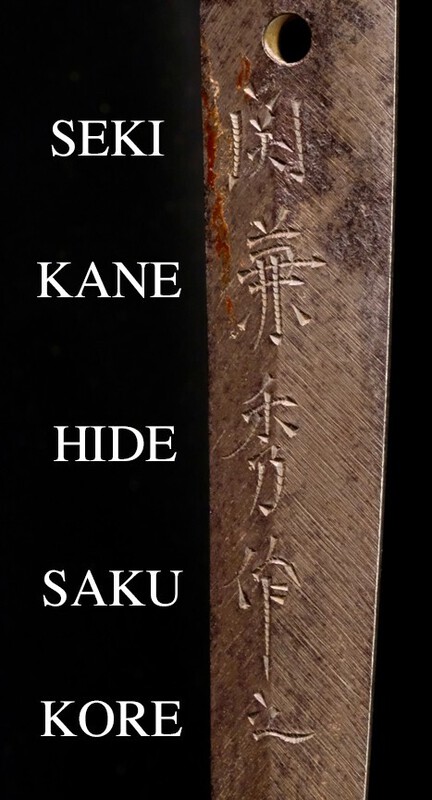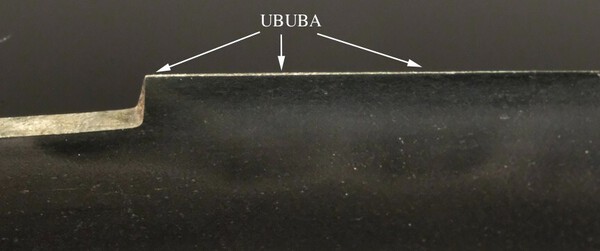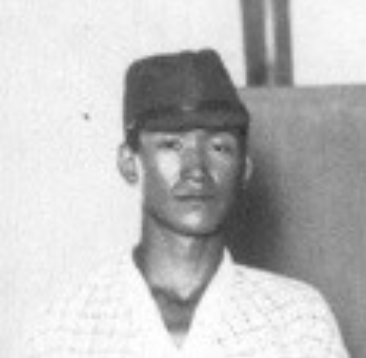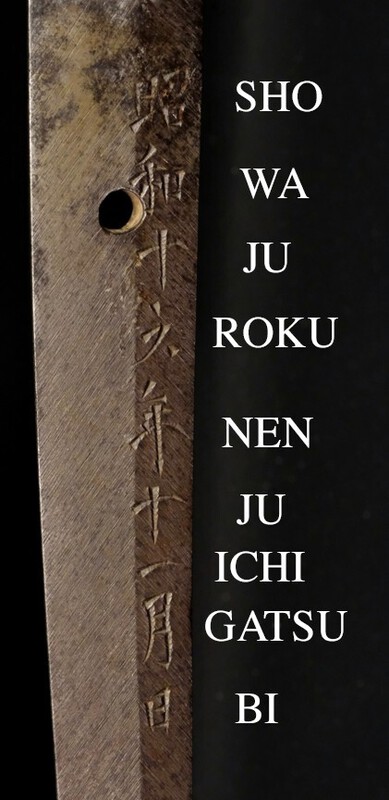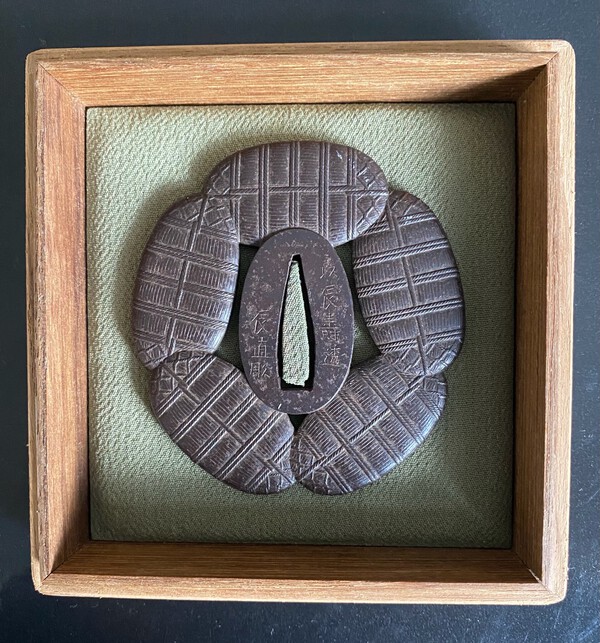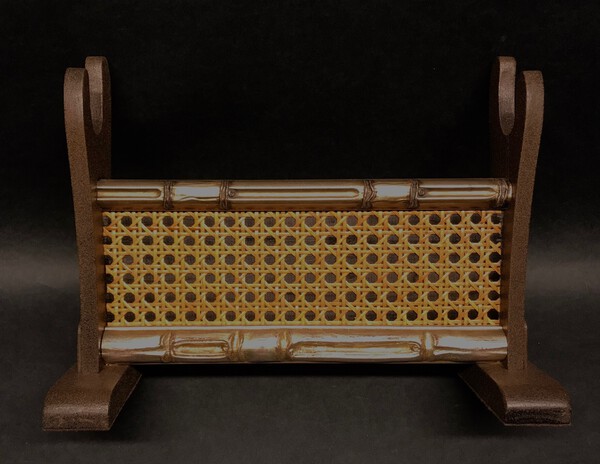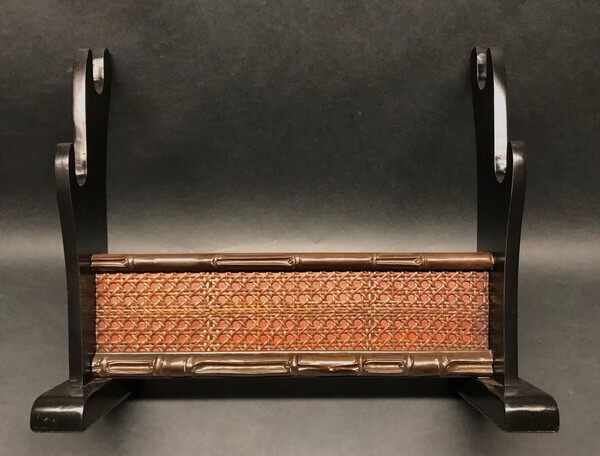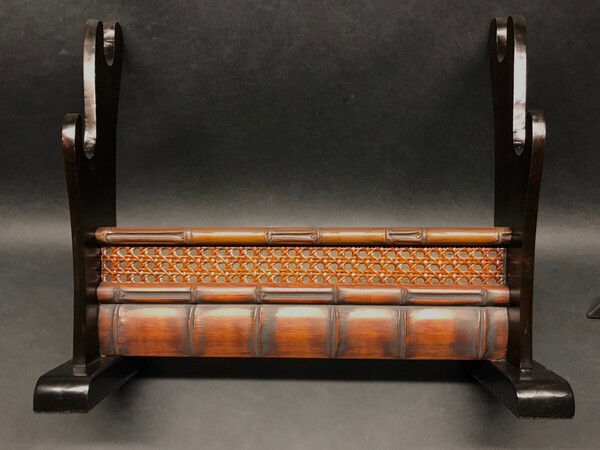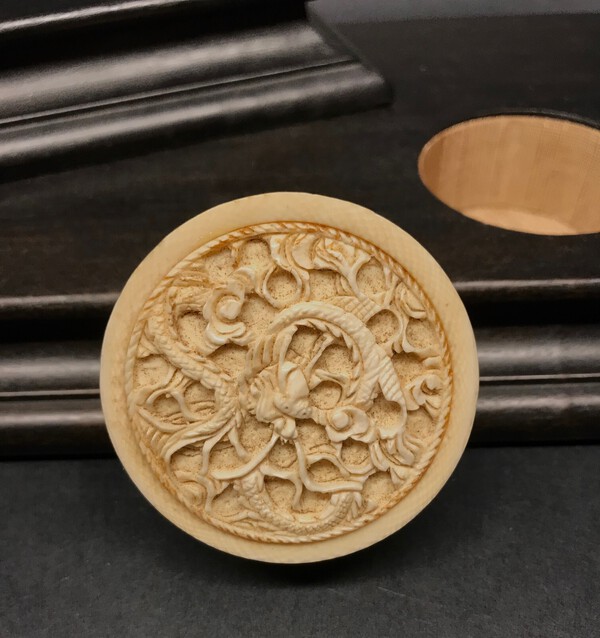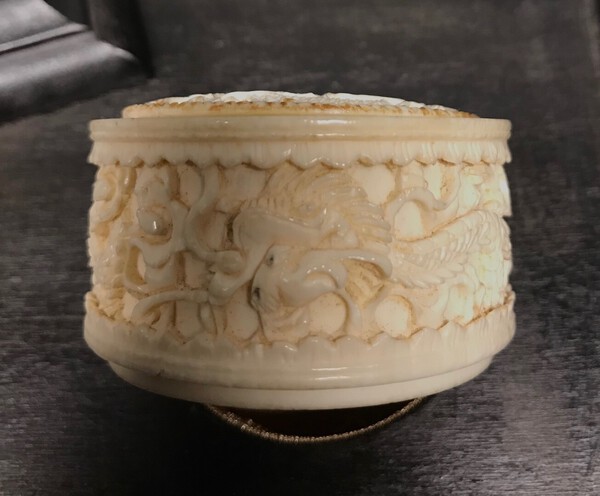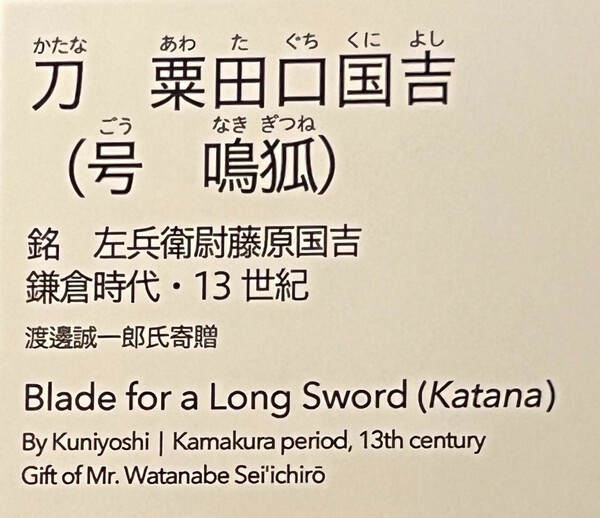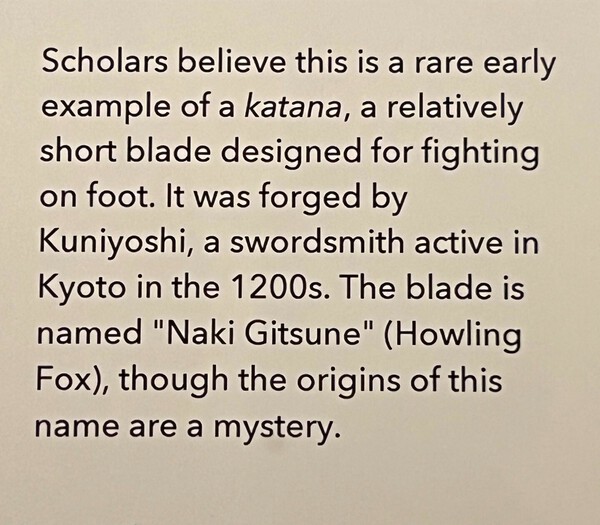-
Posts
1,718 -
Joined
-
Last visited
-
Days Won
33
Content Type
Profiles
Forums
Events
Store
Downloads
Gallery
Everything posted by Ed
-
Glad it helped.
-
-
KANEHIDE, SEKI INTANGIBLE CULTURAL PROPERTY 2 MILLION YEN SMITH MEI: SEKI KANEHIDE SAKU KORE DATE: SHOWA JU ROKU NEN JU ICHI GATSU BI (NOVEMBER 1943) NAGASA: 26" OVERALL: 34.375" MIHABA: 1.25" KASANE: 0.25" SORI: 0.5” Courtesy of Sesko’s, Swordsmiths A-Z: KANEHIDE (兼秀), Shōwa (昭和, 1926-1989), Gifu – “Nōshū-jū Kanehide” (濃州住兼秀), “Nōshū-jū Kanehide kinsaku” (濃州住兼秀謹作), “Nōshū Seki-jū Kanehide saku” (濃州関住兼秀作), “Nōshū Seki-jū Kanehide kinsaku” (濃州関住兼秀謹作), real name Tanaka Isao (田中), he was born August 24th 1913 in Ōkura (大桑) in Nagano Prefecture, in 1928 he went to Kōchi Prefecture and studied there under Kawashima Masahide (川島正秀), in 1937 he moved to Seki and entered another apprenticeship under Watanabe Kanenaga (渡辺兼永) whereupon he became the head of the coaching section of Kanenaga´s training center Watanabe Kanenaga Nihontō Tanren Juku (渡辺兼永日本刀 鍛錬塾), he retired from this post in 1940 and founded in February 1941 the company Seki Tōken Corp. (関刀剣株式会社), during World War II he worked as a rikugun-jumei-tōshō but after the war he did not continue to forge swords until spring 1954. He received the title of intangible cultural property of Gifu prefecture and died in 1989 at the age of 75. References: Hawley’s pg. 165 (KAN 850) Toko Taikan TK-122 Gendaito Meikan pg. 81 Sesko’s pg. 204
-
Yoshimune was an excellent smith and rated at 2 million Yen. He only made High to Superior Grade Gendaito. As with many swords from the Shinshinto period forward, the hada is a tight ko-itame or muji. Neil's sword is pictured on page 199 of Slough's. It is the one on the right with the Hachiman Daibosatsu inscription. The one on the left next to it is excellent as well.
-
Are any of these for sale?
-
The older or more rare the sword the more lenient they may be. You need to posts good high resolution closeups, which are in focus. It is difficult to give an opinion on a verbal description only. Seeing photos will give people here something to base an opinion on and while not a guarantee, it may help you in your decision to send it or not. Additionally, I would point out that it is difficult to say what a shinsa team will decide. It could pass this time, and fail next time.
-
The sword is signed Bungo Ju Yukinaga. My guess is gimei, it is poorly cut and I think you will find it doesn't match any known good oshigata. The blade condition is what I would call poor to fair and the koshirae is mediocre at best. I can't remember what the tsuba motif represents right off, but I imagine someone will provide you with that.
-
Good thing you passed on it if you had any thought of it being Yasutsugu. Absolutely gimei.
-
-
-
Got my ass in gear and corrected that.
-
Confucius Ed says, to assess the sword, one must see the sword.
-

Surrender tag and mei on a possible nagamaki
Ed replied to Shuriken's topic in Translation Assistance
It seems to me you were thinking of Naginata Naoshi opposed to Nagamaki. True Nagamaki are quite rare. I see no evidence of this being either. More likely a Shinshinto katana / tachi with O-Kissaki. Yours is in Gunto Tachi mounts. It seems he is one of those smiths, like Tadayoshi, who signed tachi mei. The examples posted by Jussi are mounted as katana, yet signed Tachi mei. Not positive, but likely that enryu is just another "go" or a condensed variation of enryushi. Oddly enough, I could not find a listing of Enryushi using the characters Jan and Jussi provided (延竜子). There are many variations of the spelling/pronunciation used in "go" such as: Tenryushi 天龍子 Kenryushi 見龍子 Genryushi 現龍子 Enryoshi 延陵子 Senryushi 渕龍子 Endoji 渕童子 Enryushi 渕龍子 Enryushi 淵龍子 Enryushi 円龍子 -
Hey Kirill, Your comment cracked me up. Can't say I know anyone who enjoys looking stupid. I agree with your thoughts on sugata, yet I also think it prudent to reserve judgement or opinion until more information is revealed. Hard to do much more than speculate when judging from one poor photo. Best, Ed
-

Surrender tag and mei on a possible nagamaki
Ed replied to Shuriken's topic in Translation Assistance
Just curious, why do think this is a nagamaki? -
Morita San, Thank you very much for your expertise. I suspect I would never have figured that one out own my own, Thank you very much, Ed
-
Steve, Yes, I have been looking at it for days, which is why I finally decided I needed help with it.
-
Looking for some assistance on this mei. Fairly sure the left side reads Masahide, but the right side has me stumped. Any help greatly appreciated. Ed
-
Yes, Yagyu. The one seen on SF many years ago.
-

Tachi signed Uchigatana mei
Ed replied to Alexander Smith's topic in General Nihonto Related Discussion
Yes, Kamakura era as stated in my post. An early "uchigatana" prior to their reemergence in the Muromachi period. -

Las Vegas Sword Show Jan 26-27, 2024
Ed replied to Mark's topic in Sword Shows, Events, Community News and Legislation Issues
The room in the back is HUGE and wall to wall guns, edged weapons and more. -

Tachi signed Uchigatana mei
Ed replied to Alexander Smith's topic in General Nihonto Related Discussion
I recently saw the Kuniyoshi known as the "Nakigitsune" or Howling/crying fox. The BMFA shows a nagasa of 21.25", clearly wakizashi length. Yet, the card at the Tokyo National Museum calls it a katana, though here katana may be used generically for sword. Additionally the Boston catalog refers to it as "Crying" fox. TNM labels it as "Howling" Fox. It is this type of a lack of continuity which adds to confusion. -

Tachi signed Uchigatana mei
Ed replied to Alexander Smith's topic in General Nihonto Related Discussion
It can be somewhat confusing. Nagayama relates the the Katana of the Muromachi period had a nagasa of 70-73cm, while the "so-called" uchigatana from Bunki-Tenbun eras were about 60cm and no longer than 70cm. Sesko's references relate to earlier uchigatana being much shorter ie; sunnobi tanto or ko-wakizashi. So, most or all of these fell into either wakizashi or katana lengths, though some could have been mounted in tachi koshirae, even small tachi koshirae (ko-dachi < 60cm). Although katana mei vs tachi mei is a general guide for determining katana vs tachi, the most important criteria in calling a sword tachi or katana are the mounts. Prior to the muromachi period long swords were typically tachi. After that time, the katana came into it's own due to the change in battle field tactics. If you cut down a tachi and mount it in katana mounts, it is now a katana. Similarly, take a katana and mount it as a tachi, it's a tachi. How can this be? I hate to bring this up as it will only add to the confusion, but again keep in mind that that like most things in this hobby nothing is absolute. There were smiths who broke this rule (so to speak). There were smiths who made tachi yet signed on either side. Some which signed on the opposite side regularly. So, yes there were tachi, uchigatana, katana, wakizashi, tanto and other sub-types. It is likely the confusion surrounding so many variations is why the standards of katana, wakizashi and tanto were adopted. When did you last see a set of papers which said uchigatana, or sunnobi tanto. You may see blades called by these terms, and they may have been made that way, but the papers will not concur. You see a lot of short blades labeled as "sunnobi-Tanto" yet the NBTHK designation will say wakizashi based on the length criteria of the blade. Here is the first one I googled as an example. Listed as a Sunnobi Tanto, yet papered as a wakizashi: https://nihontoart.c...legant-edo-koshirae/








